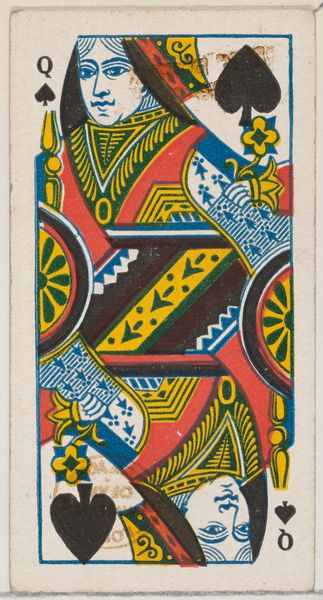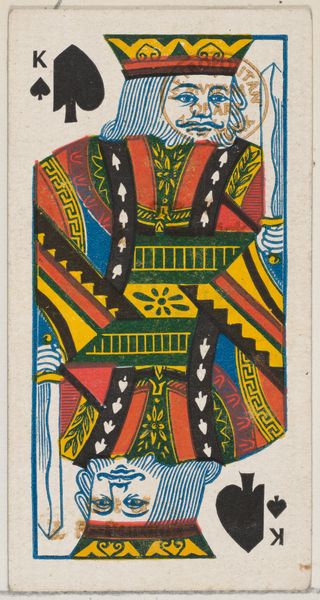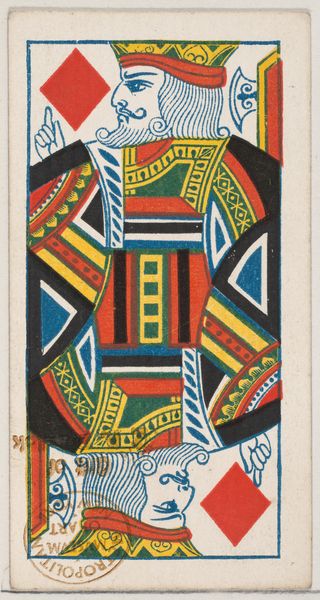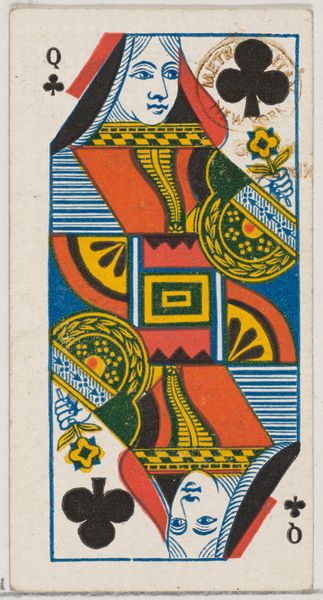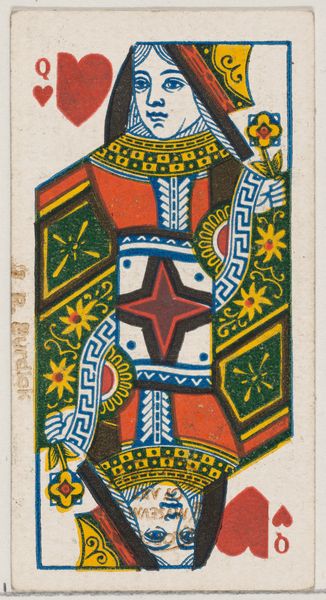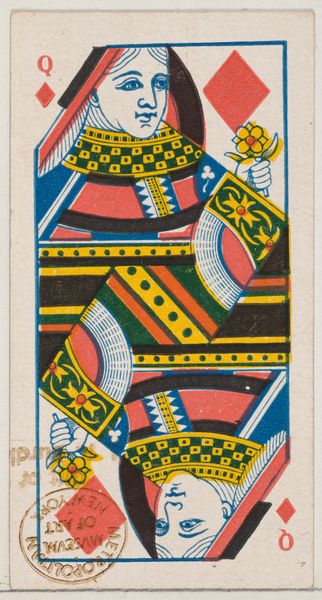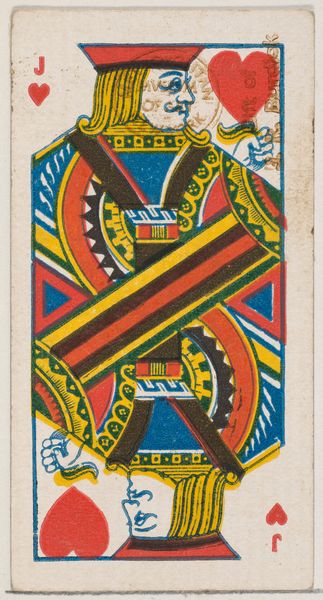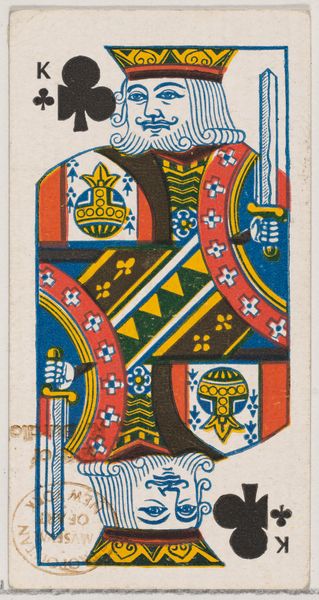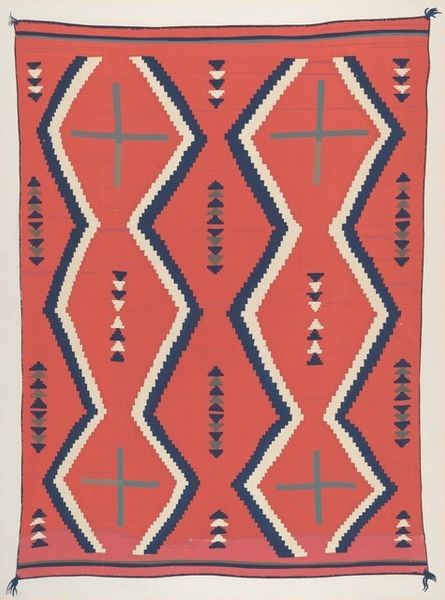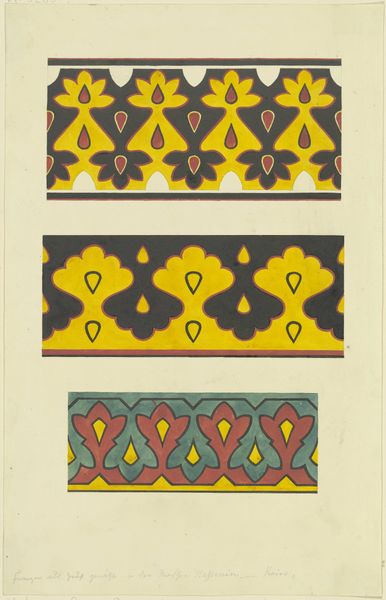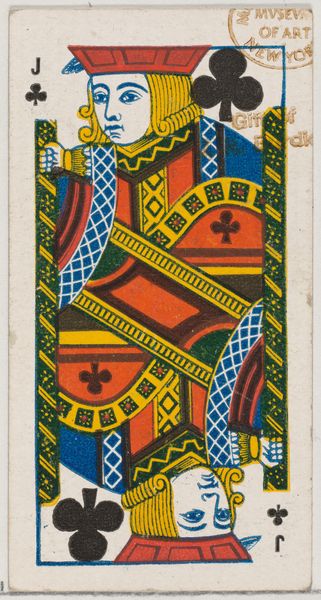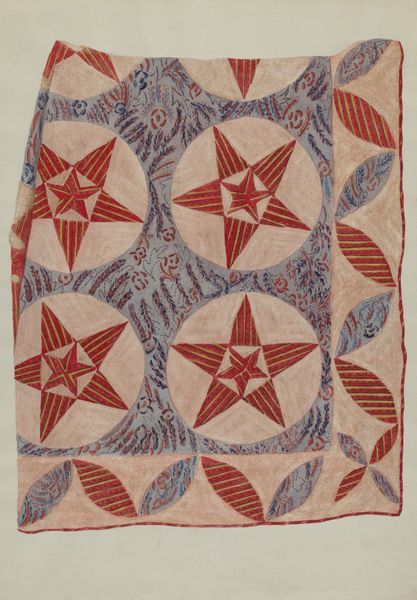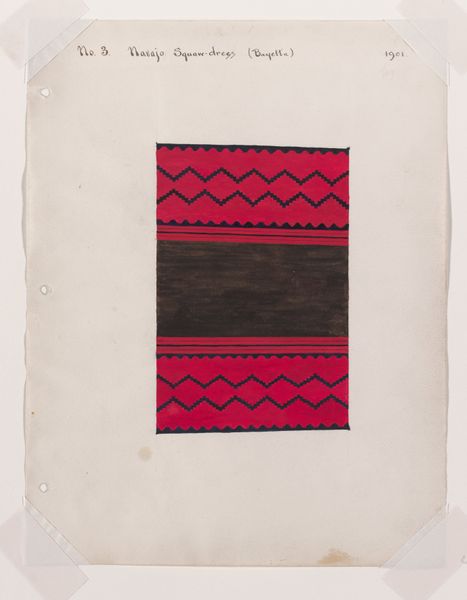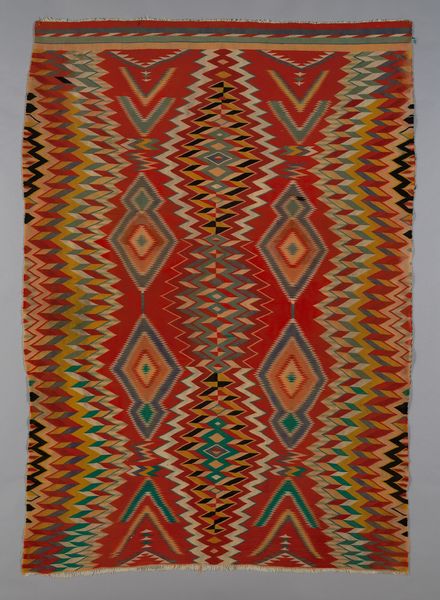
Jack of Spades (black), from the Playing Cards series (N84) for Duke brand cigarettes 1888
0:00
0:00
Dimensions: Sheet: 2 3/4 x 1 1/2 in. (7 x 3.8 cm)
Copyright: Public Domain
Curator: Well, isn't this just smashing! It has such a raw and audacious spirit. A beautiful, almost naive quality to the line work. Editor: You're quite right, there is an endearing boldness. What we're looking at is "Jack of Spades (black)," a print created around 1888. It was actually produced for W. Duke, Sons & Co., as part of a series of playing cards intended for their Duke brand cigarettes. It resides here with us at The Metropolitan Museum of Art. Curator: Cigarette cards! Imagine finding this little gem tucked inside a pack of smokes! Talk about elevating the smoking experience. This fellow looks so proper with his ginger locks. Very fetching! It also has this flat plane design reminiscent of Japanese woodblock prints. Editor: Indeed! The imagery circulated in tobacco cards spoke volumes about the period's cultural obsessions. Consider that these small artworks reached an extraordinarily wide audience, influencing popular tastes and circulating notions of class, style, and even race. Cigarette companies strategically included cards on various subjects to promote and diversify their products' appeal. The very fact that these existed signifies the intertwined relationship between advertising, art, and the masses. Curator: He has an earnest gaze that suggests a thoughtful nature. You almost get a medieval meets the machine-age aesthetic. Editor: Certainly. These cigarette cards, although ephemeral by nature, tapped into diverse aesthetic trends, from art nouveau influences in the decorative elements to the appropriation of Eastern aesthetics, thus broadening their appeal in the Western world. Curator: And let's not forget the potent, slightly menacing undertones of the Spade, which gives this piece an added layer of drama, and even the repetition within, making me think that there may be subtle, deeper, layers. The geometry sings here. A playing card never looked so… alive, really! Editor: Absolutely. "Jack of Spades (black)" and the many images like it serve as tiny, reflective mirrors of the late 19th century, inviting us to consider art's pervasive presence in even the most unexpected corners of daily life and culture. Curator: A world of charm, a universe captured in something so tiny, so transient. Makes you see how deeply connected art and commerce really are. A brilliant flash of everyday magic. Editor: A vibrant testament to the era’s ambition and an artform now widely appreciated through an institution like ours, reminding us of its historical roots.
Comments
No comments
Be the first to comment and join the conversation on the ultimate creative platform.
